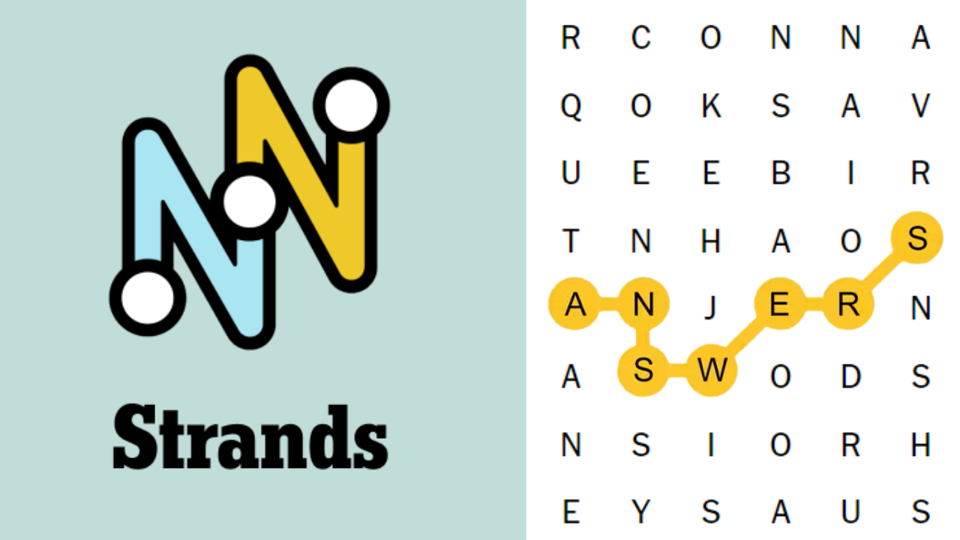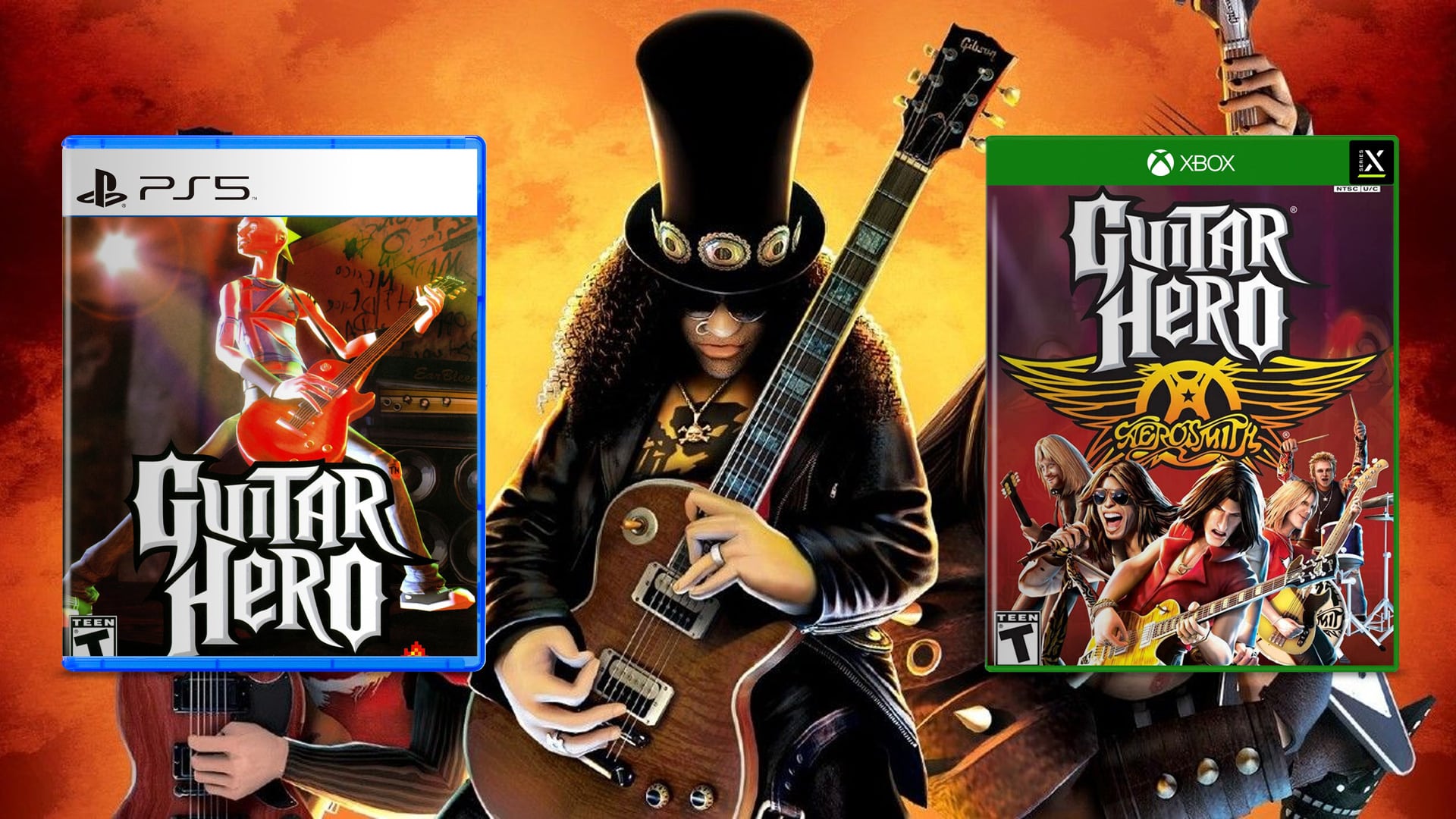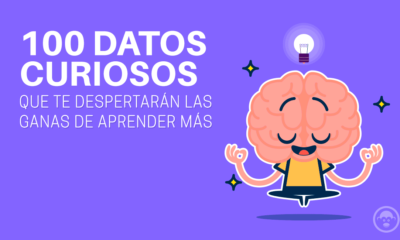Entertainment
Strands NYT: Unraveling the Digital Threads of a New Online Trend

In the ever-evolving world of digital content, one phrase has begun to capture attention across various platforms: Strands NYT. With the rising popularity of word-based puzzle games, niche blogging, and content aggregation, the phrase “Strands NYT” is making waves—blending the intellectual thrill of puzzles with the power of user-generated and curated content. But what exactly is it, and why is it resonating with such a diverse audience?
This article dives deep into what Strands NYT means, how it’s being used, and why it’s become an emerging trend in both casual entertainment and digital marketing circles. Whether you’re a word game lover, a content creator, or a digital entrepreneur, understanding this phrase could unlock new opportunities and insights.
What Is Strands NYT?
Understanding the Basics
The phrase “Strands NYT” typically refers to Strands, a word puzzle game created and distributed by The New York Times (NYT), which has already established itself as a leader in the digital puzzle arena with other hit games like Wordle, Spelling Bee, and Connections. Strands is NYT’s latest addition to its growing portfolio of brain games designed to engage readers in a fun, intellectually stimulating way.
At its core, Strands is a daily word-search puzzle with a twist. Unlike traditional word searches, this game challenges players to find thematic words hidden in a letter grid, where each puzzle follows a central theme. The grid is filled with seemingly random letters, but a closer inspection reveals carefully placed words that relate to the day’s theme.
Why the Name “Strands”?
The name “Strands” is cleverly symbolic—it suggests the intertwining of letters, themes, and ideas, much like strands of thread. It reflects the complex but satisfying process of teasing out words from a sea of letters. It also evokes the idea of intellectual “strands” or threads of thought, a nod to the mental dexterity required to master the puzzle.
The Rise of NYT Puzzle Games
From Crosswords to Wordle: The Evolution
The New York Times has long been known for its legendary crossword puzzles, but the digital era has inspired the publication to expand its reach with modern, mobile-friendly games. The success of Wordle in early 2022 proved that there’s an enormous global appetite for daily puzzles that are quick, clever, and social-media-shareable.
Riding on the success of Wordle and its viral spread, NYT acquired the game and saw a major spike in subscriptions. That success paved the way for the development of other puzzle formats, including Connections and now Strands NYT. Each new game is carefully designed to build brand loyalty, drive subscriptions, and encourage daily engagement.
Why Players Love It
Players are drawn to Strands NYT for several reasons:
-
Daily Challenge: A new puzzle is published each day, which encourages users to return regularly.
-
Mental Stimulation: It sharpens vocabulary, improves cognitive skills, and offers an intellectual break during the day.
-
Theme-Based Fun: The use of themes makes the puzzles feel more like a story or a riddle to solve rather than a mechanical exercise.
-
Social Element: Many users enjoy sharing their progress and strategies on social media, sparking discussions and communities around the game.
The Cultural Impact of Strands NYT
A New Kind of Morning Routine
For many, reading the news in the morning has shifted from scanning headlines to solving puzzles. Strands NYT has become part of the morning coffee ritual—much like checking emails or browsing social media. The appeal lies in its ability to momentarily detach people from the chaotic news cycle and instead immerse them in a thoughtful, satisfying mental activity.
An Educational Twist
Teachers and language enthusiasts have also picked up on Strands as a teaching tool. The theme-based puzzles can help students build vocabulary in a fun, gamified way. It’s also a great classroom activity that fosters collaboration, competition, and creative thinking.
How Strands NYT Benefits The New York Times
Subscription Model Expansion
One of the primary reasons NYT continues to develop puzzle-based games is their impact on digital subscriptions. These games are behind a paywall, or at least partially gated to encourage users to subscribe. They serve as a subtle but effective form of gamified content marketing—drawing users in and converting them into loyal customers.
Brand Reinforcement
Offering unique, high-quality games helps NYT reinforce its reputation as an intellectually elite brand. While the puzzles are fun, they’re also deeply associated with intelligence, culture, and daily habits of lifelong learners—values that align with NYT’s core brand identity.
Monetization and Business Opportunities Surrounding Strands NYT
Affiliate and Guest Blogging Trends
The term “Strands NYT” is now being targeted by niche bloggers and guest post contributors who recognize its rising search interest. Digital marketers are using this keyword as a gateway into broader conversations about puzzle games, brain training, education apps, and even productivity tools.
Blogging platforms that focus on educational games, digital trends, or content strategy are now creating content clusters around terms like “Strands NYT” to capture traffic. Some even offer affiliate links to puzzle apps or merchandise.
Creating Strands-Inspired Content
YouTubers and TikTok influencers have also capitalized on the trend. They post daily solution guides, puzzle breakdowns, and challenge walkthroughs. This not only drives engagement but also monetizes content through ad revenue and sponsorships.
Tips for Mastering the Strands NYT Puzzle
1. Start With the Theme
Always read the theme at the top of the puzzle first. It offers the crucial hint for solving the puzzle. All the words you find must relate to the central idea.
2. Scan Strategically
Rather than scanning line-by-line, try to look for clusters or common word roots. Many themes include variations on a base word.
3. Use the “Spangram” Trick
Each puzzle includes a special word called the “Spangram” which touches both sides of the puzzle. Finding this word first can unlock several others.
4. Don’t Overthink
Some themes might seem complex, but the answers are usually common or familiar words. Trust your instincts.
Criticism and Areas of Improvement
No digital product is without its criticisms. Some users feel that Strands NYT, like many modern puzzles, sometimes suffers from vague themes or overly abstract connections. Others have noted that it can be too easy or too hard, depending on the day’s topic.
Additionally, since the puzzle is hosted on the NYT website or app, it sometimes requires a subscription or can be hard to find for new users unfamiliar with the interface. Improving accessibility and clarity could broaden the game’s appeal further.
The Future of Strands NYT and Digital Puzzles
As attention spans shorten and mobile gaming rises, short-form, high-engagement games like Strands NYT are positioned to flourish. There is potential for:
-
Multilingual versions
-
Educational partnerships
-
Daily competitions and leaderboards
-
Expanded branding with merchandise or puzzle books
The NYT may even incorporate user-submitted puzzles in the future, turning the game into a community-powered experience.
Conclusion:
Strands NYT is more than just a puzzle—it’s a symbol of how digital media is evolving to meet users’ desire for interaction, intellect, and entertainment. Blending the legacy of one of the most respected newspapers with the engagement of daily wordplay, it creates a perfect storm for digital success.
Whether you’re playing it to train your brain, break up your workday, or just to compete with friends, Strands NYT is here to stay. And as the community around it continues to grow, it offers unique opportunities for creators, educators, and entrepreneurs alike.
In a world where attention is currency, Strands NYT proves that sometimes, the simplest challenges can hold the greatest value. So the next time you see a jumbled grid of letters, take a moment to explore—you just might unravel something brilliant.

Entertainment
“Inside Jenna Bush Hager Life: Family, Career & Legacy”

It’s not often that a public figure manages to feel both familiar and inspiring. But Jenna Bush Hager has that rare gift. As a daughter of presidents, a TV host, author, and advocate, her life weaves together privilege, purpose, and perseverance. In this article, we’ll go inside “Inside Jenna Bush Hager Life: Family, Career & Legacy” to explore how her upbringing shaped her, how she built her path in media and writing, and what legacy she’s crafting—on her own terms. If you’ve ever wondered how Jenna balances her public role with her personal passions, read on.
BIO at a Glance
| Full Name | Date of Birth | Age | Profession(s) | Nationality | Net Worth (approx.) | Notable Works / Achievements |
|---|---|---|---|---|---|---|
| Jenna Welch Bush Hager | November 25, 1981 | ~43 | Television personality, author, journalist, educator | American | ~$12–15 million | Ana’s Story, Read with Jenna, co-host of Today & Jenna & Friends |
Early Roots: Family, Childhood & Formative Years
When you hear “Bush family,” you might think politics and influence. Jenna Bush Hager grew up in that orbit—but she also absorbed values, contradictions, and purpose. Born in Dallas in 1981, she is one of twin daughters of President George W. Bush and First Lady Laura Bush. From her earliest years, Jenna’s identity was tied to both expectation and possibility.
Sibling & Heritage
Her twin sister Barbara has always been her closest mirror and foil. Together, they navigated childhood in a politically charged family, with public scrutiny and private challenges. Their lineage includes grandparent George H. W. Bush and the broader Bush political legacy—yet Jenna has carved a distinct path.
Education & Youth
The Bush family moved to Austin when George W. Bush became governor of Texas, and Jenna attended schools like St. Andrew’s Episcopal School and Austin High. In college, she pursued English at the University of Texas at Austin, also taking summer courses at New York University. Her academic training grounded her love for writing, reading, and storytelling.
Even while young, Jenna showed a willingness to push boundaries. During her college years, she faced minor controversies (legal issues related to underage drinking) that she later addressed openly—an early lesson in accountability under public gaze.
From Teaching to Media: The Career Arc
Jenna Bush Hager journey didn’t begin in TV—it began in classrooms, in Latin America, and in small steps toward public voice.
Educator & Humanitarian Beginnings
After college, she worked as a teacher’s aide in Washington, D.C., and later did an internship in Panama with UNICEF’s educational branch. That experience—immersing herself in underserved communities—left a lasting imprint on her worldview. She returned to Baltimore to coordinate reading programs and advocate for literacy.
These early roles established her credibility not as a celebrity child, but as someone invested in social issues, especially education.
Writing & Books
Her first major published work, Ana’s Story: A Journey of Hope, came in 2007. In it, Jenna narrated the life of a young woman living with HIV whom she encountered during her UNICEF work. The book was both personal and socially conscious, reflecting her voice of empathy and advocacy.
She later co-wrote children’s and youth books—including Read All About It!—and contributed to her mother’s projects. Over time, she became editor-at-large for Southern Living magazine, writing essays, features, and behind-the-scenes stories of American life.
NBC & Today Show
In 2009, Jenna’s media chapter began in earnest. She joined NBC News as a correspondent and contributor to The Today Show. Over the years, she moved steadily into more prominent roles—filling in for co-hosts, curating segments, and becoming a trusted presence in morning television.
By 2019, she officially stepped in as co-host of Today with Hoda & Jenna, taking over after Kathie Lee Gifford’s departure. That role cemented her public voice, combining warmth, curiosity, and insight. With Hoda Kotb’s exit in 2025, she now leads Today with Jenna & Friends, a fourth-hour talk show where she dialogues with guest hosts and cultivates community.
Her media influence extends beyond the studio. She founded Read with Jenna, a monthly book club segment that encourages reading among audiences, and later launched a publishing imprint called Thousand Voices Books to uplift emerging writers.
Family & Personal Life: Balance Behind the Scenes
No narrative of Jenna Bush Hager is complete without acknowledging her private world—her marriage, motherhood, and the tensions of public life.
Love & Marriage
Jenna met Henry Chase Hager in 2004 during her father’s presidential campaign. Their relationship grew over the years; they officially married in May 2008 at the family ranch in Texas. Notably, before proposing, Henry sought the blessing of then-President George W. Bush—a moment she has spoken of with humor and respect.
Together, they have three children: Mila, Poppy, and Hal. Jenna often describes motherhood as her most challenging, rewarding role—one that both anchors and stretches her. She shares glimpses into her parenting philosophy on Today, connecting with viewers who juggle family and ambition.
Values, Privacy & Identity
Jenna has consciously distanced herself from formal party alignment. Unlike many in her extended family, she identifies as an independent thinker, refusing to be boxed by her last name. She’s candid about mistakes, growth, lessons learned—attributes that deepen her authenticity.
She also works to protect her family’s boundaries. Despite being in the public eye, she guards moments of home, reading, play, and rest—reminding us that public stature need not erase personal grounding.
Legacy & Influence: What Jenna Bush Hager Leaves Behind
When you ask, “What will Jenna Bush Hager be remembered for?” the answer isn’t simple. Her legacy is still in formation—but several threads already stand out.
Voice for Literacy & Storytelling
Through Read with Jenna and her publishing imprint, Jenna is building a legacy around giving voice to others. She uses her media platform to spotlight writers, stories, and perspectives that might otherwise go unseen. Her imprint, Thousand Voices Books, epitomizes this mission: amplifying diverse authors and building community around narrative.
Media with Heart
Jenna’s presence on television is not just polished—it’s warm. She blends lightness with thoughtful questions, allowing vulnerability when appropriate, and modeling that you can be curious, grounded, and high-profile simultaneously. She proves that celebrity doesn’t have to feel hollow.
Bridge Between Spaces
She is, in many ways, a bridge: between politics and art, social issues and entertainment, privilege and humility. She speaks to people on all sides—those drawn to political heritage and those drawn to human stories. Her path suggests that legacy doesn’t require abandoning roots—it can transform them.
Challenges & Turning Points
While much of Jenna Bush Hager’s path looks steady, her life has seen key pivots and challenges that refined her voice.
-
Public scrutiny & expectations: Growing up in the Bush lineage meant that every misstep could be magnified. Jenna navigated that by embracing accountability and learning publicly.
-
Career transitions: Moving from education to publishing to national TV was not seamless. Each shift demanded reinvention and humility.
-
Balancing authenticity: As her platform grew, so did the tension between public persona and private self. Finding that equilibrium has been an ongoing work.
-
Leading without reliance: In stepping up after her co-hosts’ departures, Jenna now carries more of the show’s identity. That responsibility requires vision, stamina, and adaptability.
Key Lessons from Jenna’s Journey
Let me shift tone for a moment and speak plainly: Jenna’s path offers lessons that are universal, not just for celebrities.
-
Leverage your roots, don’t live in them. Her family gave her platform—and she used it to build something uniquely hers.
-
Small, steady work precedes spotlight. Her time as a teacher aide or UNICEF intern matters. Start small.
-
Real voice matters more than polish. Viewers connect when someone seems real. Jenna errs in a way that feels human.
-
Legacy lives in service. Her imprint, her book club, her educational advocacy—all points to a life focused outward, not self.
-
Evolve as seasons change. She’s shifting from co-host to lead, from public figure to publisher—showing that identity can evolve.
Jenna Bush Hager in 2025 & Beyond
In early 2025, Jenna announced the launch of Thousand Voices Books, her own publishing imprint committed to uplifting emerging writers across genres. This move signals that she’s not content to merely host—she wants to build the infrastructure for stories to thrive.
Meanwhile, as the host of Today with Jenna & Friends, she’s redefining daytime talk, blending intimacy, literature, and social conversation. Her choices suggest that her legacy will be as much about what she enables in others as about what she does herself.
Conclusion
Inside the life of Jenna Bush Hager, we find more than the sum of her family ties, television credits, or bestselling books. We see someone quietly, persistently shaping influence through empathy, words, and purpose. Her journey reminds us that legacy isn’t inherited—it’s lived, day by day, through choices that align with one’s values.
If her story resonates with you—maybe in your own work, your love of books, or your desire to lead with heart—I hope you’ll share your take in the comments below. And if this deep dive into Jenna Bush Hager’s family, career & legacy moved you, feel free to share this post so others can be inspired too
Entertainment
Ted Lasso Cast: Stars, Roles & Fun Facts Behind the Show

Ted Lasso Cast: The Faces Behind the Feel-Good Hit
Few television series have captured hearts like Ted Lasso. What began as a quirky concept about an American football coach managing an English soccer team evolved into a global phenomenon. The show’s brilliance lies not only in its heartfelt writing but also in the extraordinary Ted Lasso cast, who brought depth, humor, and warmth to every episode.
In this article, we’ll explore each major character, the talented actors who play them, and a few behind-the-scenes insights that make Ted Lasso so special.
The Heart of the Show: Ted Lasso Himself
Jason Sudeikis as Ted Lasso
Jason Sudeikis, the creative mind and star behind the titular role, gives life to Ted Lasso—a relentlessly optimistic coach from Kansas who is hired to manage AFC Richmond, a struggling Premier League soccer team. Despite lacking any soccer experience, Ted wins people over with his empathy, wit, and belief in teamwork.
Sudeikis’ portrayal earned him multiple Emmy Awards and made Ted Lasso a symbol of positivity in modern television. Before this role, he was best known for his work on Saturday Night Live, We’re the Millers, and Horrible Bosses.
The Dynamic Team Behind AFC Richmond
Hannah Waddingham as Rebecca Welton
Hannah Waddingham plays the formidable yet vulnerable Rebecca Welton, the owner of AFC Richmond. Initially hiring Ted to sabotage the team as revenge against her cheating ex-husband, Rebecca’s character undergoes one of the most inspiring transformations on the show.
Waddingham, a classically trained theatre performer, delivers a performance that’s both powerful and endearing. She’s also known for her roles in Game of Thrones and Sex Education.
Brett Goldstein as Roy Kent
Roy Kent, portrayed by Brett Goldstein, is the show’s gruff veteran player turned coach. Known for his fiery temper and foul-mouthed humor, Roy’s tough exterior hides a heart of gold. His evolution—from a frustrated footballer to a devoted mentor and partner—has made him a fan favorite.
Interestingly, Brett Goldstein was originally a writer for the show. His portrayal of Roy was so convincing in audition tapes that he earned the role himself.
Juno Temple as Keeley Jones
Keeley Jones, played by Juno Temple, starts as a model and influencer but grows into a confident businesswoman and PR consultant for the team. Her friendship with Rebecca and her on-again-off-again romance with Roy Kent give the show both warmth and complexity.
Temple’s energy and emotional depth have made Keeley one of the most beloved characters on Ted Lasso. Before the show, Juno appeared in films like Atonement and The Dark Knight Rises.
Ted Lasso Cast: Player Profiles and Character Bios
The AFC Richmond locker room wouldn’t be complete without its eclectic mix of players and coaches. Below is a detailed bio table featuring the main Ted Lasso cast members who brought the team to life.
Main Ted Lasso Cast Bio Table
| Actor | Character Name | Role Description | Background / Notable Work |
|---|---|---|---|
| Jason Sudeikis | Ted Lasso | Head Coach of AFC Richmond; optimistic and kind-hearted | Saturday Night Live, Horrible Bosses |
| Hannah Waddingham | Rebecca Welton | Team owner; fierce yet compassionate | Game of Thrones, Les Misérables |
| Brett Goldstein | Roy Kent | Retired player turned coach; grumpy but lovable | SuperBob, Derek |
| Juno Temple | Keeley Jones | PR consultant and former model | Atonement, Vinyl |
| Nick Mohammed | Nathan Shelley | Kit man turned coach; complex character arc | Intelligence, The Martian |
| Jeremy Swift | Leslie Higgins | AFC Richmond’s Director of Football Operations | Downton Abbey, Mary Poppins Returns |
| Phil Dunster | Jamie Tartt | Star player; arrogant yet talented | Strike Back, The Trouble with Maggie Cole |
| Toheeb Jimoh | Sam Obisanya | Kind-hearted player; moral compass of the team | The Power, Anthony |
| Cristo Fernández | Dani Rojas | Cheerful striker known for “Football is life!” | Former professional footballer, actor in Spider-Man: No Way Home |
| Brendan Hunt | Coach Beard | Ted’s loyal assistant; intelligent and mysterious | Co-creator of Ted Lasso, actor in Horrible Bosses 2 |
The Evolution of the Team
Each character in Ted Lasso undergoes meaningful growth. Rebecca finds friendship and self-worth, Roy learns to embrace vulnerability, and Ted continues spreading his philosophy of kindness and resilience.
Nick Mohammed’s Nathan Shelley, or “Nate,” experiences one of the show’s most dramatic arcs—rising from the shy kit man to assistant coach before struggling with ego and betrayal. His journey reflects the dangers of unchecked ambition and insecurity.
Meanwhile, Jamie Tartt (Phil Dunster) evolves from a selfish celebrity athlete into a true team player, proving that redemption is possible even for the most arrogant stars.
The Humor and Heart of the Series
The Ted Lasso cast excels at balancing comedy and emotion. Every joke lands with heart, every emotional scene feels authentic. The chemistry between the cast members, both on and off-screen, has been widely praised.
Much of the humor stems from cultural misunderstandings between American and British characters, but it’s never cruel—just full of charm. Ted’s relentless positivity often acts as a mirror, forcing others to reflect on their own flaws and growth.
Behind the Scenes: Chemistry and Collaboration
Jason Sudeikis and co-creators Bill Lawrence, Brendan Hunt, and Joe Kelly developed Ted Lasso from a series of NBC Sports promotional sketches into one of the most celebrated comedies of the decade.
The collaboration between writers and actors plays a huge part in the show’s authenticity. Many cast members contribute creative input, ensuring every moment feels natural. For instance, Brett Goldstein wrote much of Roy Kent’s dialogue himself, maintaining the perfect balance between aggression and heart.
Cultural Impact and Critical Acclaim
Since its debut on Apple TV+ in 2020, Ted Lasso has become a symbol of optimism during challenging times. The Ted Lasso cast and crew have won multiple Emmy Awards, Golden Globes, and Screen Actors Guild Awards for their performances and writing.
The series resonated deeply with audiences worldwide, reminding viewers of the power of empathy, teamwork, and personal growth. Schools, companies, and sports teams alike have cited Ted’s leadership style as an inspiration for real-world communication and positivity.
Fun Facts About the Ted Lasso Cast
-
Jason Sudeikis based Ted’s accent and demeanor partly on real-life college coaches from Kansas.
-
Cristo Fernández, who plays Dani Rojas, was a professional soccer player in Mexico before turning to acting.
-
Hannah Waddingham filmed emotional scenes just weeks after giving birth, adding extra realism to Rebecca’s vulnerability.
-
Brett Goldstein was initially part of the writing team, and only later became Roy Kent after sending his self-taped audition.
-
Nick Mohammed’s role as Nate was expanded after writers noticed his natural comedic timing and dramatic range.
Themes That Make Ted Lasso Timeless
The show isn’t just about football—it’s about humanity. Each character’s story explores universal themes like forgiveness, self-worth, and mental health. Ted’s journey with panic attacks, Rebecca’s struggle for independence, and Roy’s fear of losing relevance all mirror real emotional battles.
What keeps audiences coming back is the sincerity of the storytelling. The Ted Lasso cast brings authenticity to these struggles, showing that vulnerability and kindness can coexist with ambition and success.
A Legacy of Positivity
As Ted Lasso wrapped its third season, fans worldwide celebrated its heartfelt conclusion. While rumors of spin-offs persist, the show’s message endures: kindness and belief can transform people and communities.
Jason Sudeikis has hinted that the story may continue in new forms, possibly exploring other characters’ journeys—especially those of Keeley, Roy, or Sam. Whatever happens next, the Ted Lasso cast has already cemented its legacy as one of television’s most inspiring ensembles.
The Magic of Teamwork
The show’s greatest triumph is how it portrays teamwork—not just on the field, but in life. Each member of the Ted Lasso cast embodies collaboration, humility, and respect, both in character and in reality.
Whether it’s Ted’s belief in “BELIEVE,” Rebecca’s redemption, or Nate’s path toward forgiveness, the lessons are universal. The charm lies in how humor, heartache, and hope intertwine so effortlessly.
Conclusion: Why the Ted Lasso Cast Matters
The Ted Lasso cast brought something rare to modern television—a story about kindness, empathy, and community in a cynical world. Each actor infused their character with humanity, turning what could have been a simple sports comedy into a global phenomenon of emotional depth.
As audiences bid farewell to AFC Richmond, they carry with them lessons about belief, teamwork, and resilience. The series reminds us that true leadership isn’t about power—it’s about heart.
Football might be life for Dani Rojas, but for millions of fans around the world, Ted Lasso is hope.
Entertainment
Guitar Hero PS5: Revival, Features, and Gaming Experience

Guitar Hero PS5: Revival, Features, and Future of Rhythm Gaming
The world of music rhythm gaming has always had one shining star: Guitar Hero. From living-room competitions to live tournaments, the franchise defined an era where strumming a plastic guitar felt just as exciting as shredding a real one. Now, with the rise of next-generation consoles, one question dominates the minds of fans: Will there be Guitar Hero PS5?
This article explores the potential comeback of the beloved game, how it could evolve on Sony’s powerhouse console, and why a new release could reignite the rhythm-gaming revolution.
The Legacy of Guitar Hero
When Guitar Hero launched in 2005, it immediately carved out a niche that combined music, gaming, and performance. Players weren’t just pressing buttons—they were becoming rock stars in their living rooms. Over the years, the franchise grew with sequels, band editions, and new features like online multiplayer.
By the late 2000s, the game had become a cultural phenomenon. Families played it together, friends battled in head-to-head matches, and players discovered new music through its setlists. However, like many iconic franchises, it eventually slowed down. Declining sales and oversaturation put it on pause.
But rhythm games never truly die. The nostalgia and innovation of modern consoles suggest a revival could be on the horizon.
Why Guitar Hero PS5 Could Work
The PlayStation 5 is designed for immersive experiences. With lightning-fast SSDs, advanced haptics in the DualSense controller, and powerful hardware, it opens a world of possibilities for a music game revival.
Imagine Guitar Hero on PS5 with:
-
4K visuals and next-gen graphics: Concert-style stages with lifelike crowd reactions and dynamic lighting.
-
Adaptive triggers and haptics: Feeling the resistance of each strum or feedback when hitting notes perfectly.
-
VR integration possibilities: Pairing with PlayStation VR2 to step onto a virtual stage.
-
Online play with global tournaments: Competing with players around the world in real time.
The timing also feels right. Nostalgia-driven revivals are thriving, and music games are making a quiet comeback. With modern streaming platforms and the ability to expand track libraries through downloadable content, Guitar Hero PS5 could enjoy longevity like never before.
Evolution of Gameplay on Next-Gen Consoles
The original Guitar Hero series thrived on simple but addictive gameplay. However, the expectations of gamers have evolved. On PS5, the formula could expand into a deeper and more rewarding experience.
Customizable Career Modes
Players could build their own rockstar journey—choosing genres, venues, and bandmates while unlocking rewards along the way.
Expansive Song Libraries
Instead of limited disc-based setlists, PS5 hardware and online integration could support massive libraries updated regularly with chart-topping hits.
Realistic Guitar Controllers
New guitar peripherals could combine the classic five-button layout with modern sensors, offering a more authentic experience without losing the arcade-style fun.
Community-Created Content
One of the most exciting opportunities would be a feature where fans create and share custom tracks, making the game endless in replay value.
Challenges Facing Guitar Hero PS5
A successful revival won’t come without obstacles. Licensing music remains one of the biggest challenges. Securing popular songs across genres requires negotiations with labels and artists, which can drive up costs.
Additionally, the market has shifted. Today’s gamers balance countless free-to-play options, competitive shooters, and massive RPGs. For Guitar Hero to succeed, it needs to offer unique value: community, nostalgia, and innovation rolled into one.
The hardware challenge is also significant. Creating affordable yet durable guitar controllers for PS5 players will require smart design choices. Without reliable peripherals, even the best game mechanics might fall flat.
The Impact of Guitar Hero on Music and Gaming
It’s important to understand why fans are so eager for Guitar Hero’s return. The franchise wasn’t just about gaming—it influenced music culture.
-
Discovering New Artists: Many players were introduced to classic rock, metal, and alternative music through the game’s setlists.
-
Creating Social Experiences: Parties often revolved around Guitar Hero competitions.
-
Encouraging Real Music Learning: Some players transitioned from the game to real instruments, inspired to pick up actual guitars.
The potential for Guitar Hero PS5 goes beyond entertainment. It could once again bridge gaming and music, inspiring a new generation of fans.
Comparing Guitar Hero to Modern Rhythm Games
In recent years, rhythm games like Beat Saber and Fuser have carried the torch in creative ways. Yet none have captured the exact mix of accessibility, energy, and cultural impact that Guitar Hero had.
Where Beat Saber relies on VR and physical movement, Guitar Hero thrives on its unique instrument controller. And unlike traditional rhythm titles, Guitar Hero feels like a performance—something audiences can enjoy watching as much as players enjoy performing.
By merging the strengths of these modern games with its nostalgic identity, Guitar Hero PS5 could stand tall in the rhythm game market once again.
What Fans Want from Guitar Hero PS5
Fan expectations are high, but they’re also clear. A successful return would need to focus on these core desires:
-
Classic gameplay with modern polish
-
Expansive tracklist covering old and new hits
-
Affordable, reliable guitar controllers
-
Online competitions and leaderboards
-
VR and AR experiences for deeper immersion
-
Cross-platform multiplayer for broader communities
Meeting these needs would ensure both loyal fans and newcomers find value in the revival.
The Future of Rhythm Gaming and Guitar Hero
The broader rhythm-gaming landscape is evolving. With VR technology becoming more accessible, motion-based rhythm titles are gaining traction. However, Guitar Hero brings a unique identity: blending arcade simplicity with rock-star fantasy.
If Activision and PlayStation were to invest in Guitar Hero PS5, it could redefine how music games are experienced in the 2020s. Coupled with esports potential, live-streaming integration, and downloadable expansions, the franchise could enjoy a new golden era.
Conclusion: The Anticipation for Guitar Hero PS5
The excitement surrounding Guitar Hero PS5 is more than just nostalgia—it’s about innovation, community, and music. The franchise has always been more than a game; it’s a stage for players to express themselves and share the joy of performance.
While no official release has been confirmed, the idea of a Guitar Hero revival on PS5 continues to spark conversations and hope among fans. If it does return, it has the potential to revolutionize rhythm gaming once again.
Until then, players can keep their guitars tuned, their playlists ready, and their dreams of rocking virtual arenas alive. The stage is waiting—it just needs Guitar Hero to strike the first chord once more.
-

 Nature4 months ago
Nature4 months agoFascinating World of Facts: A Journey Through Datos Curiosos
-

 Lifestyle5 months ago
Lifestyle5 months agoHow to Make Slime: The Ultimate DIY Guide for Kids and Adults
-

 Entertainment5 months ago
Entertainment5 months agoUnderstanding Basketball Zero Codes: A Complete Guide
-

 Business3 months ago
Business3 months agoWho Is Alex Karp Wife? Private Life of Palantir CEO
-

 Celebrity4 months ago
Celebrity4 months agoWho Is Drew Pritchard New Wife? Inside the Antique Star’s Private Love Life
-

 Business3 months ago
Business3 months agoRahki Giovanni Net Worth: Income, Fitness, and Success
-

 Entertainment5 months ago
Entertainment5 months agoGoogle Block Breaker: A Modern Tribute to Classic Arcade Fun
-

 Celebrity3 months ago
Celebrity3 months agoMelanie Zanona Salary, Career Growth & Net Worth Revealed


